Input interpretation

ethylene glycol monobutyl ether acetate
Chemical names and formulas
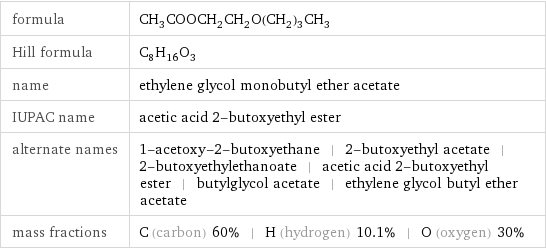
formula | CH_3COOCH_2CH_2O(CH_2)_3CH_3 Hill formula | C_8H_16O_3 name | ethylene glycol monobutyl ether acetate IUPAC name | acetic acid 2-butoxyethyl ester alternate names | 1-acetoxy-2-butoxyethane | 2-butoxyethyl acetate | 2-butoxyethylethanoate | acetic acid 2-butoxyethyl ester | butylglycol acetate | ethylene glycol butyl ether acetate mass fractions | C (carbon) 60% | H (hydrogen) 10.1% | O (oxygen) 30%
Lewis structure
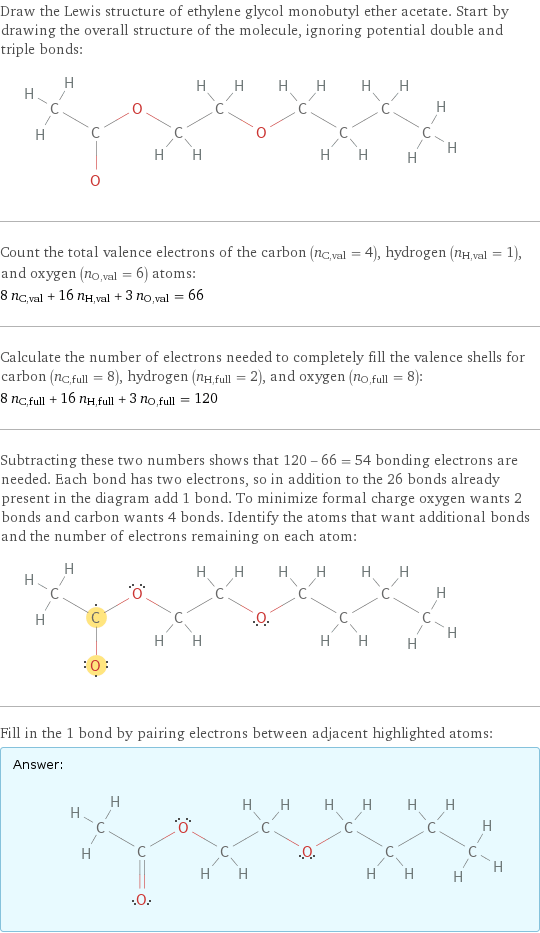
Draw the Lewis structure of ethylene glycol monobutyl ether acetate. Start by drawing the overall structure of the molecule, ignoring potential double and triple bonds: Count the total valence electrons of the carbon (n_C, val = 4), hydrogen (n_H, val = 1), and oxygen (n_O, val = 6) atoms: 8 n_C, val + 16 n_H, val + 3 n_O, val = 66 Calculate the number of electrons needed to completely fill the valence shells for carbon (n_C, full = 8), hydrogen (n_H, full = 2), and oxygen (n_O, full = 8): 8 n_C, full + 16 n_H, full + 3 n_O, full = 120 Subtracting these two numbers shows that 120 - 66 = 54 bonding electrons are needed. Each bond has two electrons, so in addition to the 26 bonds already present in the diagram add 1 bond. To minimize formal charge oxygen wants 2 bonds and carbon wants 4 bonds. Identify the atoms that want additional bonds and the number of electrons remaining on each atom: Fill in the 1 bond by pairing electrons between adjacent highlighted atoms: Answer: | |
3D structure
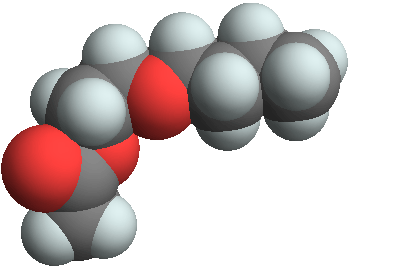
3D structure
Basic properties
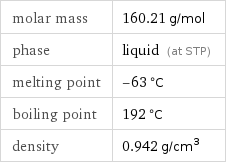
molar mass | 160.21 g/mol phase | liquid (at STP) melting point | -63 °C boiling point | 192 °C density | 0.942 g/cm^3
Units

Liquid properties (at STP)
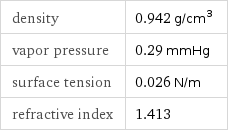
density | 0.942 g/cm^3 vapor pressure | 0.29 mmHg surface tension | 0.026 N/m refractive index | 1.413
Units

Thermodynamic properties
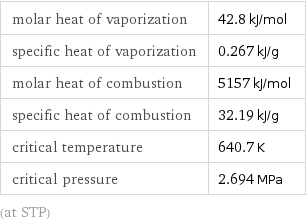
molar heat of vaporization | 42.8 kJ/mol specific heat of vaporization | 0.267 kJ/g molar heat of combustion | 5157 kJ/mol specific heat of combustion | 32.19 kJ/g critical temperature | 640.7 K critical pressure | 2.694 MPa (at STP)
Chemical identifiers
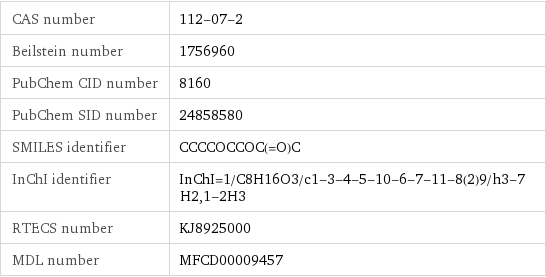
CAS number | 112-07-2 Beilstein number | 1756960 PubChem CID number | 8160 PubChem SID number | 24858580 SMILES identifier | CCCCOCCOC(=O)C InChI identifier | InChI=1/C8H16O3/c1-3-4-5-10-6-7-11-8(2)9/h3-7H2, 1-2H3 RTECS number | KJ8925000 MDL number | MFCD00009457
NFPA label

NFPA label

NFPA health rating | 1 NFPA fire rating | 2 NFPA reactivity rating | 0
Safety properties
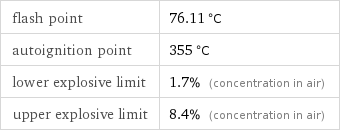
flash point | 76.11 °C autoignition point | 355 °C lower explosive limit | 1.7% (concentration in air) upper explosive limit | 8.4% (concentration in air)
Toxicity properties

odor | fruity

RTECS classes | primary irritant